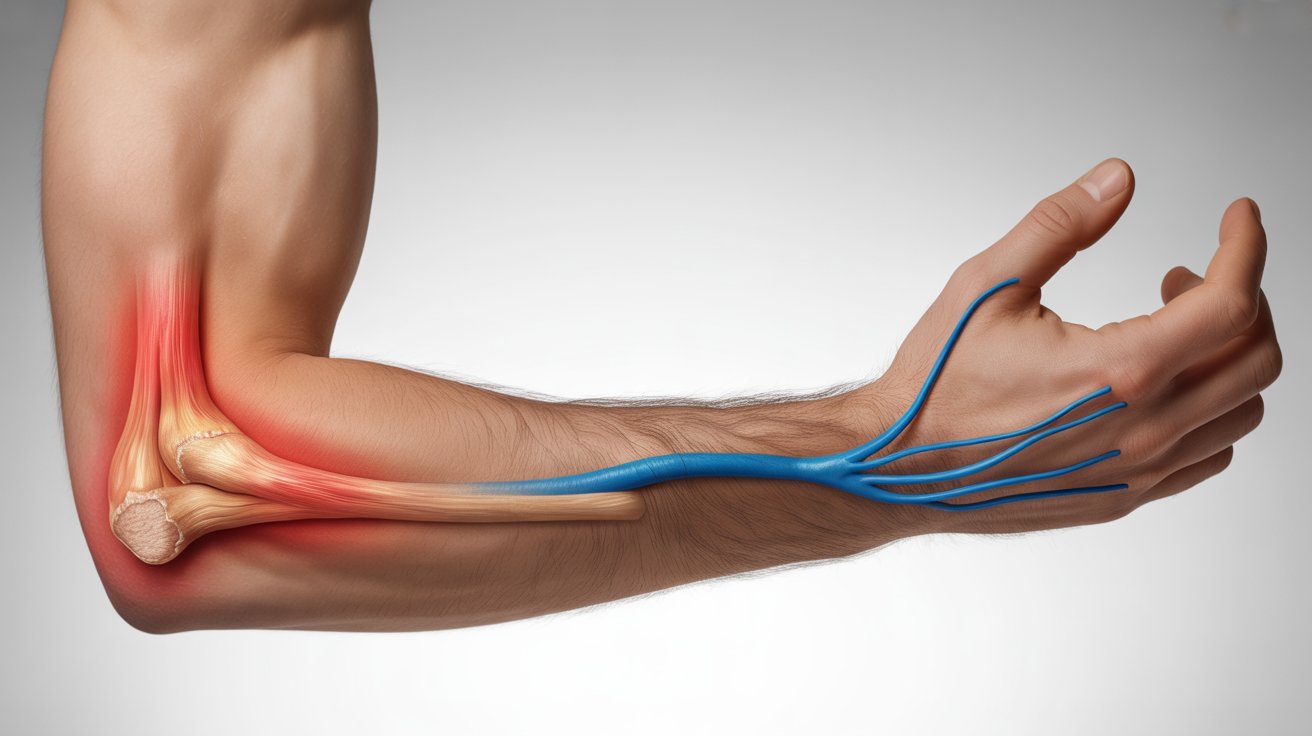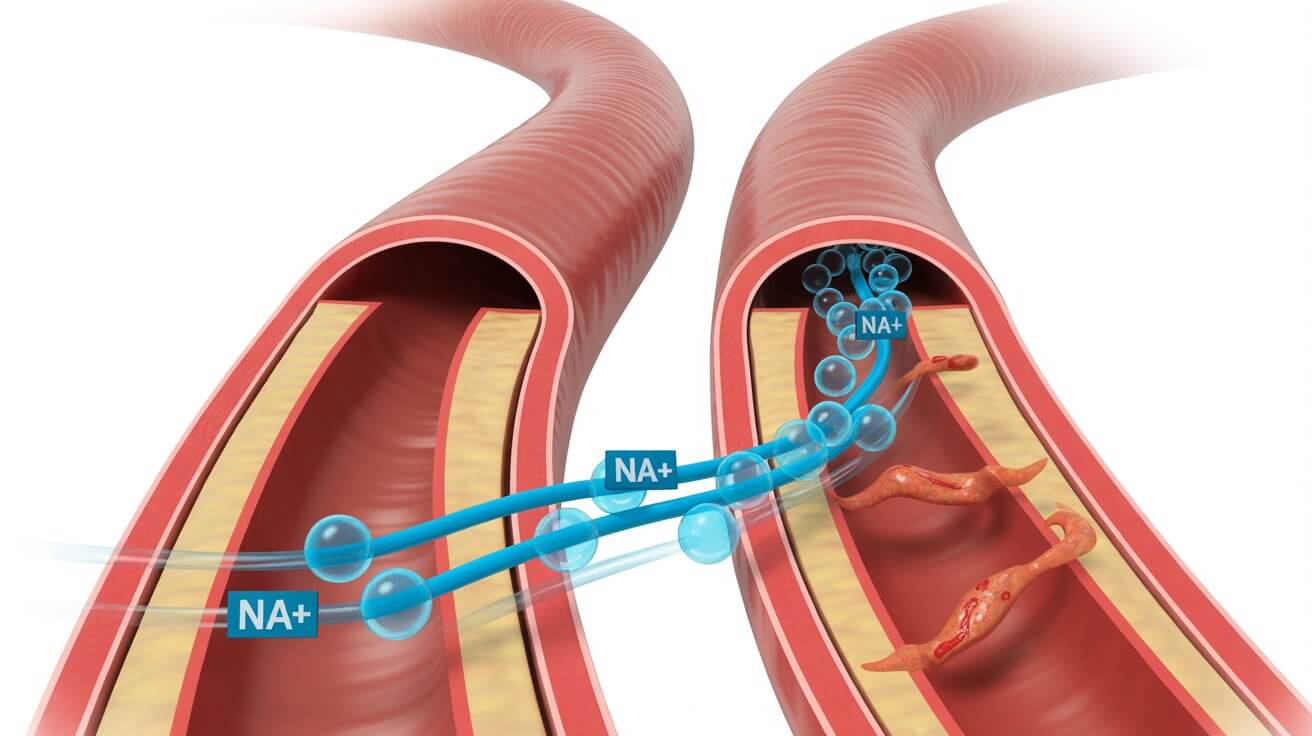It starts with a familiar feeling. You’ve just finished a delicious meal—maybe a hearty pasta dish, a sandwich on fresh bread, or a celebratory slice of cake. But soon after, a subtle discomfort begins to creep in. A gentle bloating, a bit of gas, a feeling of fatigue that seems to come out of nowhere. You might dismiss it as overeating or a sensitive stomach, but when these gluten intolerance symptoms repeat themselves every time you eat certain foods, you start to wonder: could it be something more?
This experience is increasingly common for millions of Americans. The conversation around gluten, the protein found in wheat, barley, and rye, has moved from niche health food stores to mainstream supermarkets and dinner tables. While many people can digest gluten without any issues, a growing number of individuals are discovering that this common protein is the source of their chronic discomfort. Understanding the signs of gluten intolerance and the difference between the various forms of gluten-related disorders is the first step toward reclaiming your well-being.
The Science Behind Gluten-Related Disorders
When we talk about “gluten intolerance,” we’re often referring to a spectrum of conditions, each with a distinct biological mechanism. It’s not a one-size-fits-all diagnosis. The three main forms of gluten-related disorders are celiac disease, wheat allergy, and non-celiac gluten sensitivity (NCGS).
Celiac disease is an autoimmune disorder. This means that when a person with celiac disease consumes gluten, their immune system mistakenly attacks the lining of their small intestine. This attack damages the villi, the tiny, finger-like projections that are responsible for absorbing nutrients from food. Over time, this damage can lead to a host of health problems, ranging from digestive issues to nutrient deficiencies and even an increased risk of other autoimmune disorders.
Wheat allergy, on the other hand, is a true allergic reaction to proteins found in wheat, including but not limited to gluten. Like other allergies, a wheat allergy can trigger a range of symptoms, from mild (hives, itching, swelling) to severe and life-threatening (anaphylaxis). This reaction is typically immediate, occurring within minutes to hours after consuming wheat.
Non-celiac gluten sensitivity (NCGS) is perhaps the most common yet least understood of the three. People with NCGS experience symptoms similar to those with celiac disease after eating gluten, but they do not have the same autoimmune reaction or intestinal damage. The exact cause of NCGS is still being researched, but it is a real and often debilitating condition for those who experience it.
More Helpful Reads You Might Like:
When to Suspect Gluten Intolerance: The Telltale Signs
The symptoms of gluten-related disorders can be incredibly varied and often overlap, making self-diagnosis difficult and unreliable. However, there are several common signs that may indicate your body is not tolerating gluten well.
Digestive Discomfort: This is the most well-known category of symptoms. It can include:
•Bloating and Gas: A feeling of fullness or swelling in the abdomen, often accompanied by excessive gas.
•Diarrhea or Constipation: Chronic, unexplained changes in bowel habits.
•Abdominal Pain: Cramping or a dull ache in the stomach area.
•Beyond the Gut: Gluten-related issues can manifest in ways that have seemingly nothing to do with digestion. These can include:
•“Brain Fog”: Difficulty concentrating, memory lapses, and a general feeling of mental cloudiness.
•Fatigue: A persistent feeling of exhaustion that is not relieved by rest.
•Headaches or Migraines: Frequent or chronic headaches.
•Skin Problems: Conditions like eczema, rashes, or a specific type of itchy, blistering rash called dermatitis herpetiformis (which is strongly linked to celiac disease).
•Joint and Muscle Pain: Aching joints and muscles without a clear cause.
•Mood Changes: Increased anxiety, depression, or irritability.
It’s important to remember that these symptoms can be caused by many different conditions. The key is to pay attention to the pattern: do these symptoms tend to appear or worsen after you’ve eaten foods containing gluten?
Getting a Diagnosis: The Right Way to Know for Sure
If you suspect you have a gluten-related disorder, it is crucial to see a healthcare provider for proper testing before you remove gluten from your diet. Starting a gluten-free diet before being tested can interfere with the accuracy of the results, making it much harder to get a definitive diagnosis.
Here’s what the diagnostic process typically involves:
1.Blood Tests: For celiac disease, the first step is usually a blood test to look for specific antibodies that the body produces in response to gluten. The most common test is the tissue transglutaminase (tTG-IgA) test.
2.Endoscopy and Biopsy: If the blood tests are positive for celiac disease, your doctor will likely recommend an upper endoscopy. During this procedure, a small camera is used to look at your small intestine, and a tiny tissue sample (a biopsy) is taken to check for damage to the villi.
3.Exclusion Diet: For non-celiac gluten sensitivity, there is currently no specific diagnostic test. The diagnosis is typically made by first ruling out celiac disease and wheat allergy. Then, your doctor may recommend a supervised gluten-free diet for a period of time to see if your symptoms improve. This is often followed by a “gluten challenge,” where you reintroduce gluten to see if the symptoms return, confirming the diagnosis.
Treatment: The Gluten-Free Lifestyle
For all three conditions—celiac disease, wheat allergy, and non-celiac gluten sensitivity—the primary treatment is a strict, lifelong gluten-free diet. This means avoiding all foods that contain wheat, barley, and rye.
While this may sound daunting at first, the availability of gluten-free products has exploded in recent years. Here are some practical steps to get started:
1.Focus on Naturally Gluten-Free Foods: The foundation of a healthy gluten-free diet is foods that are naturally free of gluten. This includes:
•Fruits and vegetables
•Meat, poultry, and fish
•Beans, legumes, and nuts
•Dairy products
•Naturally gluten-free grains like rice, quinoa, corn, and buckwheat
2.Read Labels Carefully: Gluten can be hidden in many processed foods, including sauces, soups, and even some medications. Learn to read food labels and look for the “gluten-free” certification.
3.Be Mindful of Cross-Contamination: For people with celiac disease, even a tiny amount of gluten can trigger an immune reaction. This means being careful about cross-contamination in the kitchen. Use separate toasters, cutting boards, and utensils for gluten-free and gluten-containing foods.
4.Seek Professional Guidance: A registered dietitian who specializes in gluten-related disorders can be an invaluable resource. They can help you create a balanced and nutritious gluten-free meal plan and ensure you’re not missing out on any essential nutrients.
A Gentle Call to Action
If you’ve been living with unexplained digestive issues, fatigue, or any of the other symptoms we’ve discussed, it’s time to listen to your body. Don’t dismiss your discomfort as “just the way it is.” A conversation with your healthcare provider could be the first step toward a diagnosis and a life free from the symptoms that have been holding you back. Taking control of your health is a journey, and understanding your body’s relationship with gluten might just be the next chapter.
Frequently Asked Questions (FAQ)
Q: How long does it take to feel better after starting a gluten-free diet?
A: The timeline for improvement varies among individuals. Some people with gluten sensitivity may notice relief from digestive symptoms within a few days to weeks of eliminating gluten. However, for those with celiac disease, intestinal healing can take several months to years, especially in adults. It’s important to work closely with your healthcare provider to monitor your progress and ensure you’re following the diet correctly.
Q: Can I occasionally “cheat” on a gluten-free diet if I only have mild symptoms?
A: For individuals with celiac disease, even small amounts of gluten can trigger an immune response and cause intestinal damage, regardless of whether symptoms are present. This is why strict, lifelong adherence to a gluten-free diet is essential. For those with non-celiac gluten sensitivity, the response may vary, but it’s generally recommended to maintain consistency with the diet to avoid symptom flare-ups and support overall well-being.
Q: Are gluten-free products automatically healthier than regular products?
A: Not necessarily. Many processed gluten-free products can be higher in sugar, fat, and calories while being lower in fiber and certain nutrients compared to their gluten-containing counterparts. The healthiest approach to a gluten-free diet focuses on naturally gluten-free whole foods like fruits, vegetables, lean proteins, and gluten-free grains like quinoa and rice, rather than relying heavily on processed alternatives.
Q: If my blood test for celiac disease is negative, could I still have gluten sensitivity?
A: Yes, it’s possible to have non-celiac gluten sensitivity even with negative celiac disease tests. This condition doesn’t involve the same autoimmune response or intestinal damage as celiac disease, so standard celiac tests won’t detect it. If you continue to experience symptoms that improve on a gluten-free diet, discuss this with your healthcare provider. They may recommend an elimination diet followed by a gluten challenge under medical supervision to help determine if gluten sensitivity is the cause of your symptoms.
Sources & Further Reading
1.Lebwohl B, Ludvigsson JF, Green PHR. Celiac disease and non-celiac gluten sensitivity. BMJ. 2015;351:h4347. Available at: https://pmc.ncbi.nlm.nih.gov/articles/PMC4596973/
2.National Institute of Diabetes and Digestive and Kidney Diseases. Celiac Disease. Available at: https://www.niddk.nih.gov/health-information/digestive-diseases/celiac-disease
3.Mayo Clinic. Celiac disease – Symptoms and causes. Available at: https://www.mayoclinic.org/diseases-conditions/celiac-disease/symptoms-causes/syc-20352220
4.Cleveland Clinic. Gluten Intolerance: Symptoms and Treatment. Available at: https://my.clevelandclinic.org/health/diseases/21622-gluten-intolerance
5.Johns Hopkins Medicine. Celiac Disease. Available at: https://www.hopkinsmedicine.org/health/conditions-and-diseases/celiac-disease
6.MedlinePlus. Celiac Disease. Available at: https://medlineplus.gov/celiacdisease.html
7.Mayo Clinic. Gluten-free diet: A beginner’s guide. Available at: https://www.mayoclinic.org/healthy-lifestyle/nutrition-and-healthy-eating/in-depth/gluten-free-diet/art-20048530









